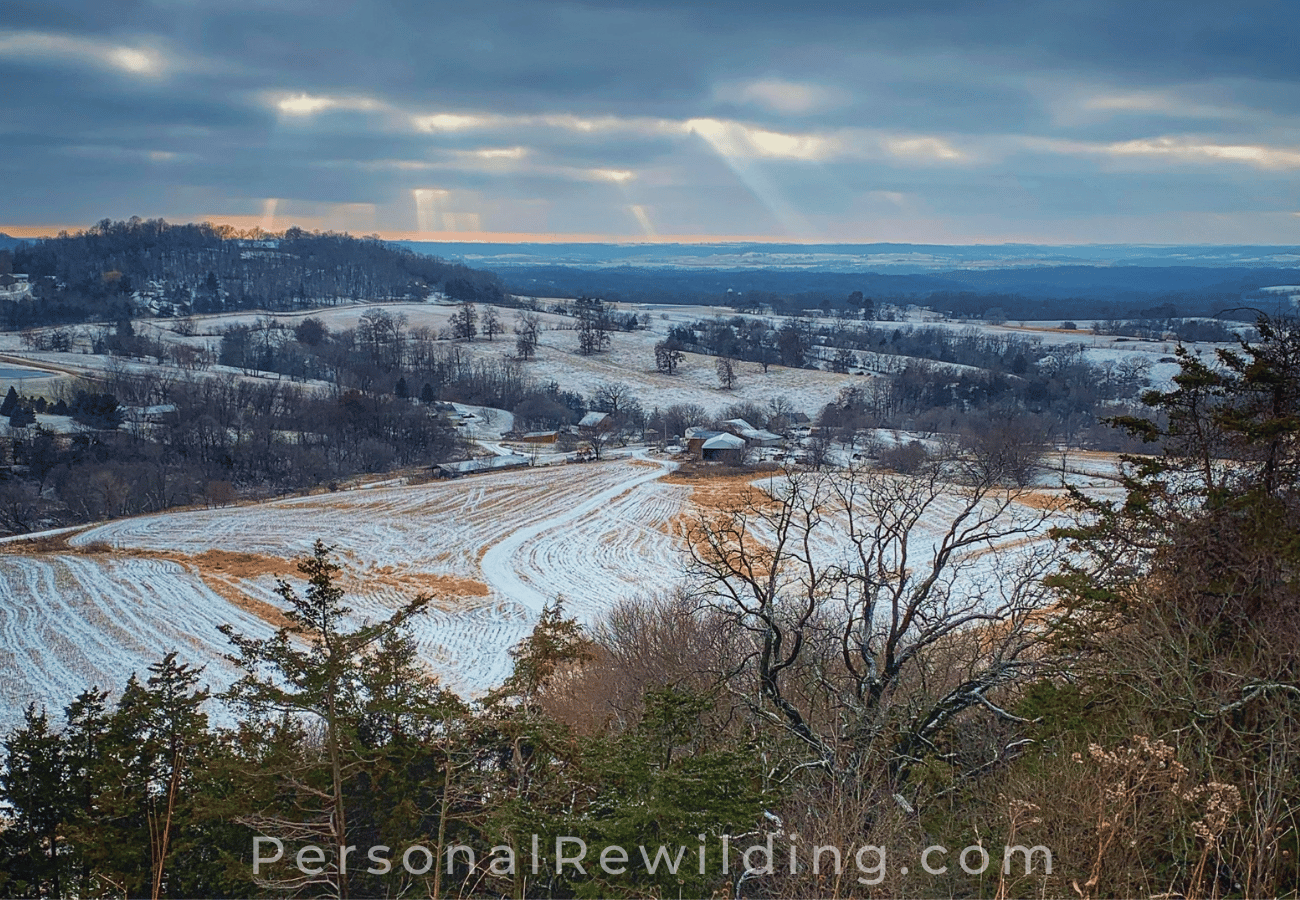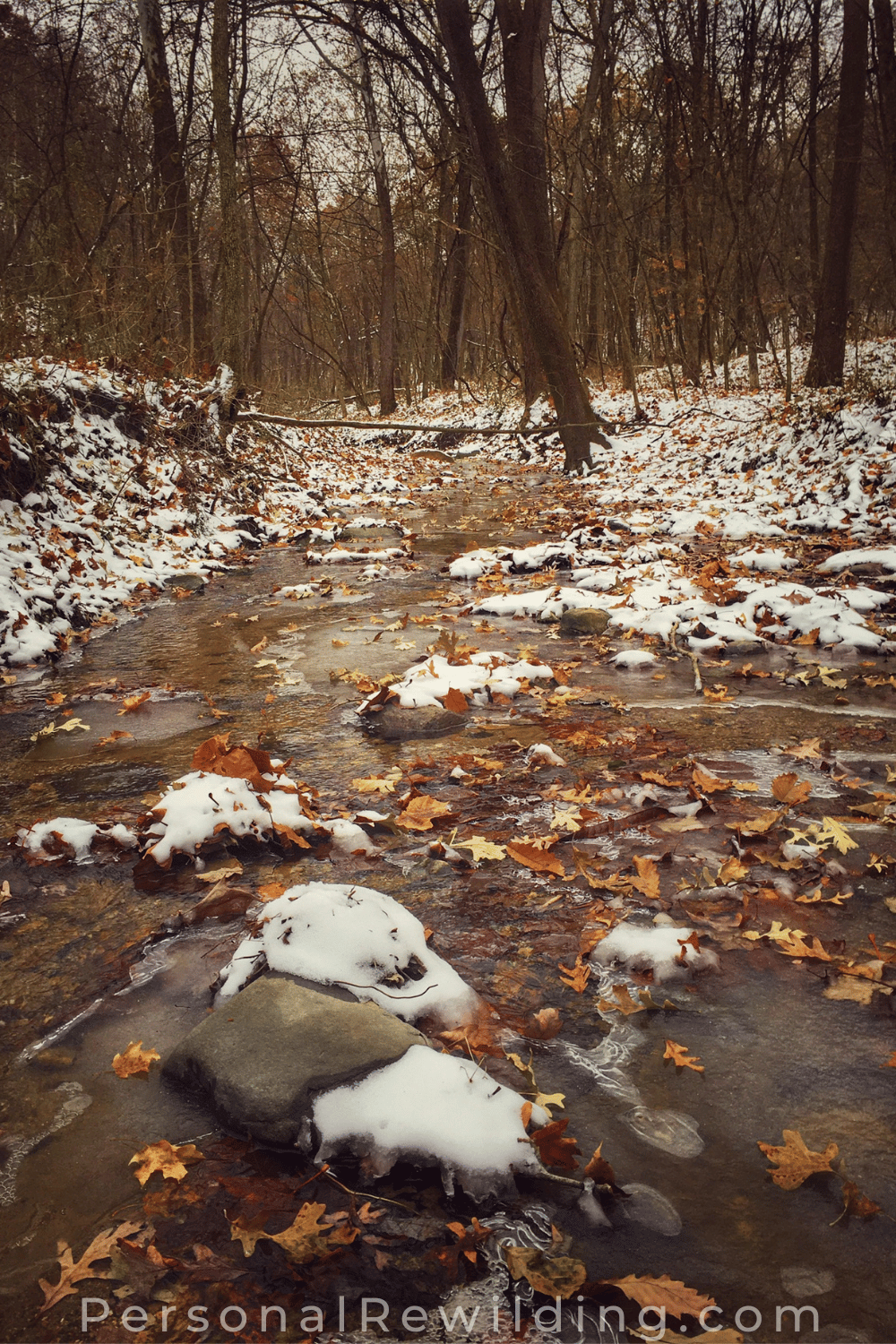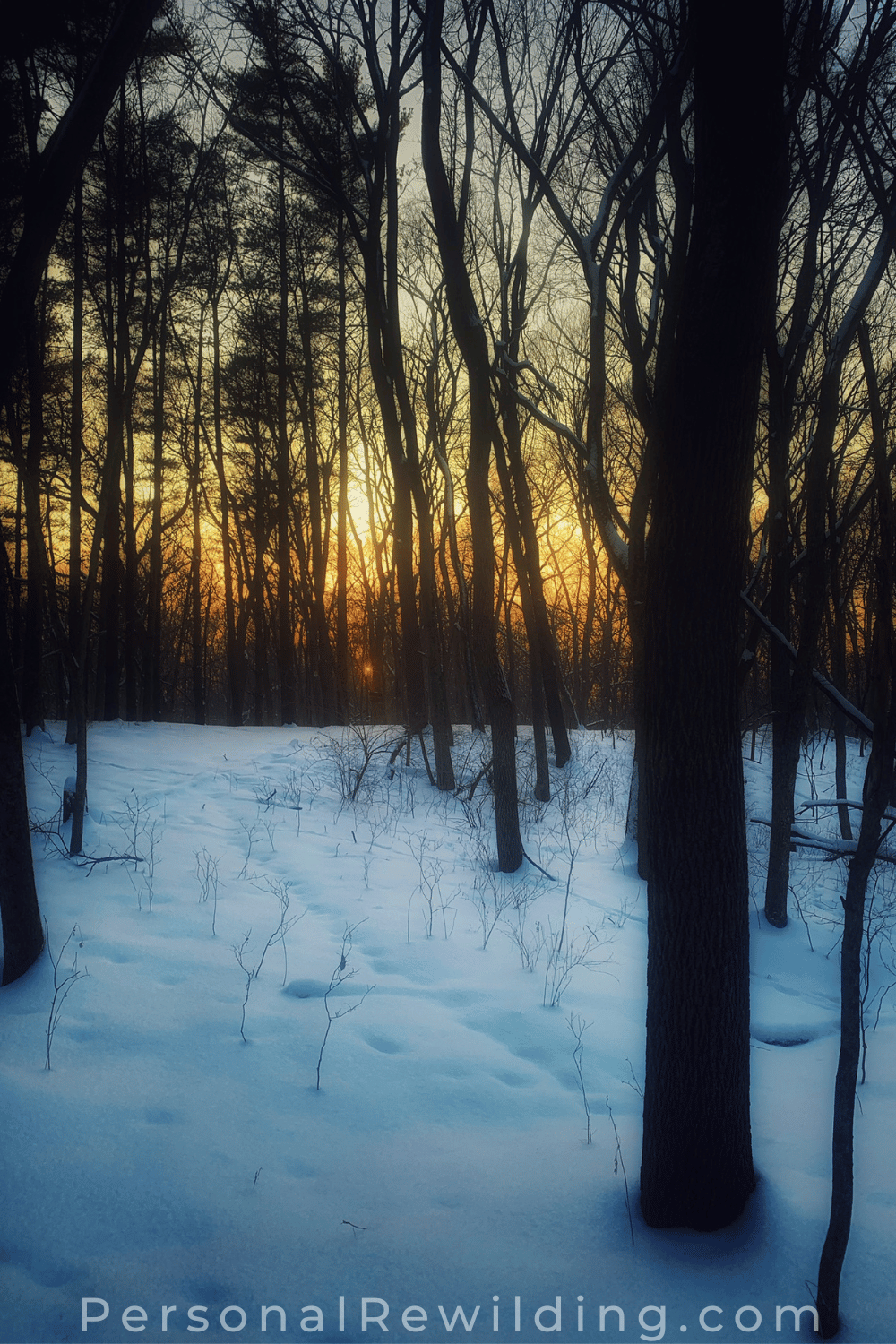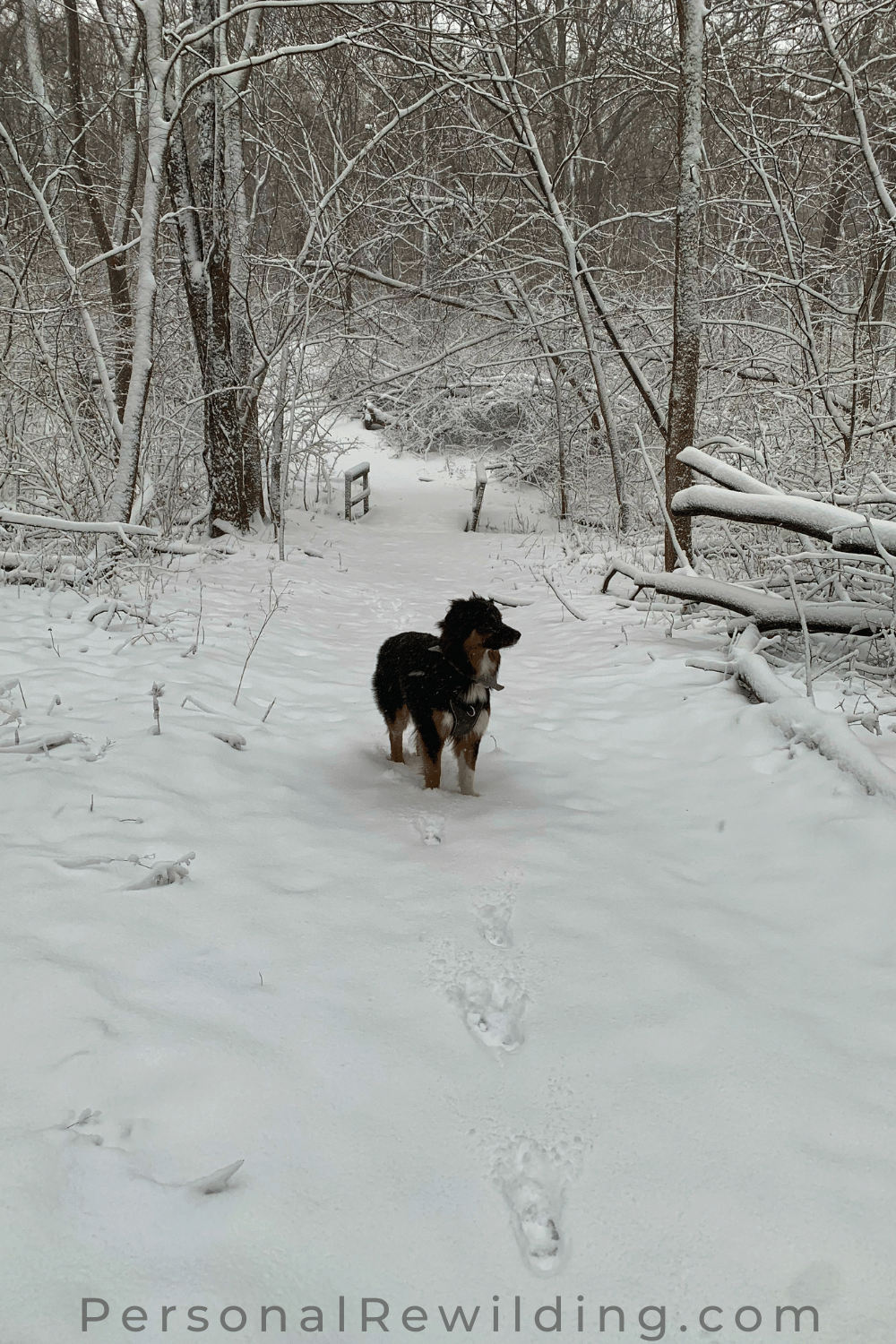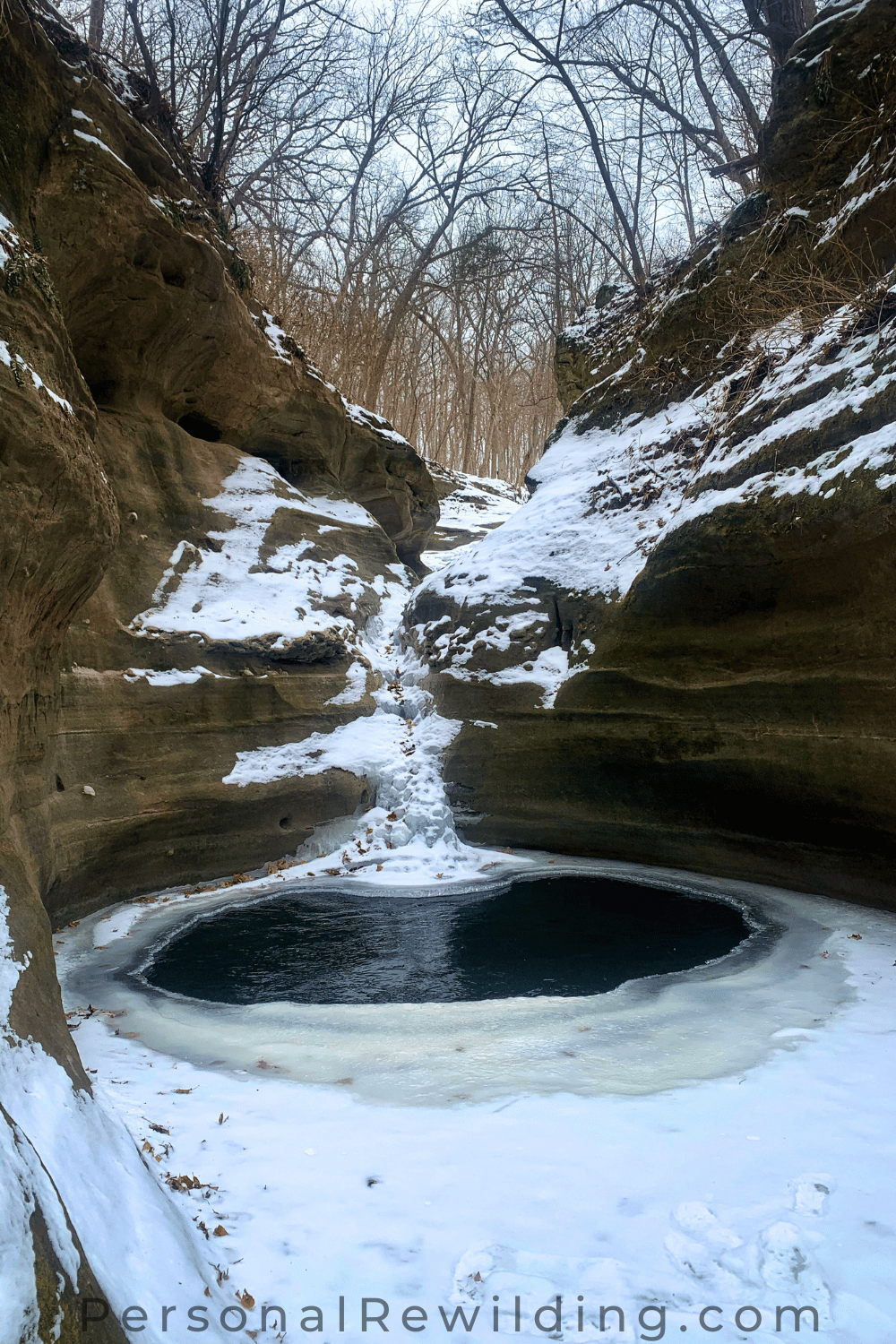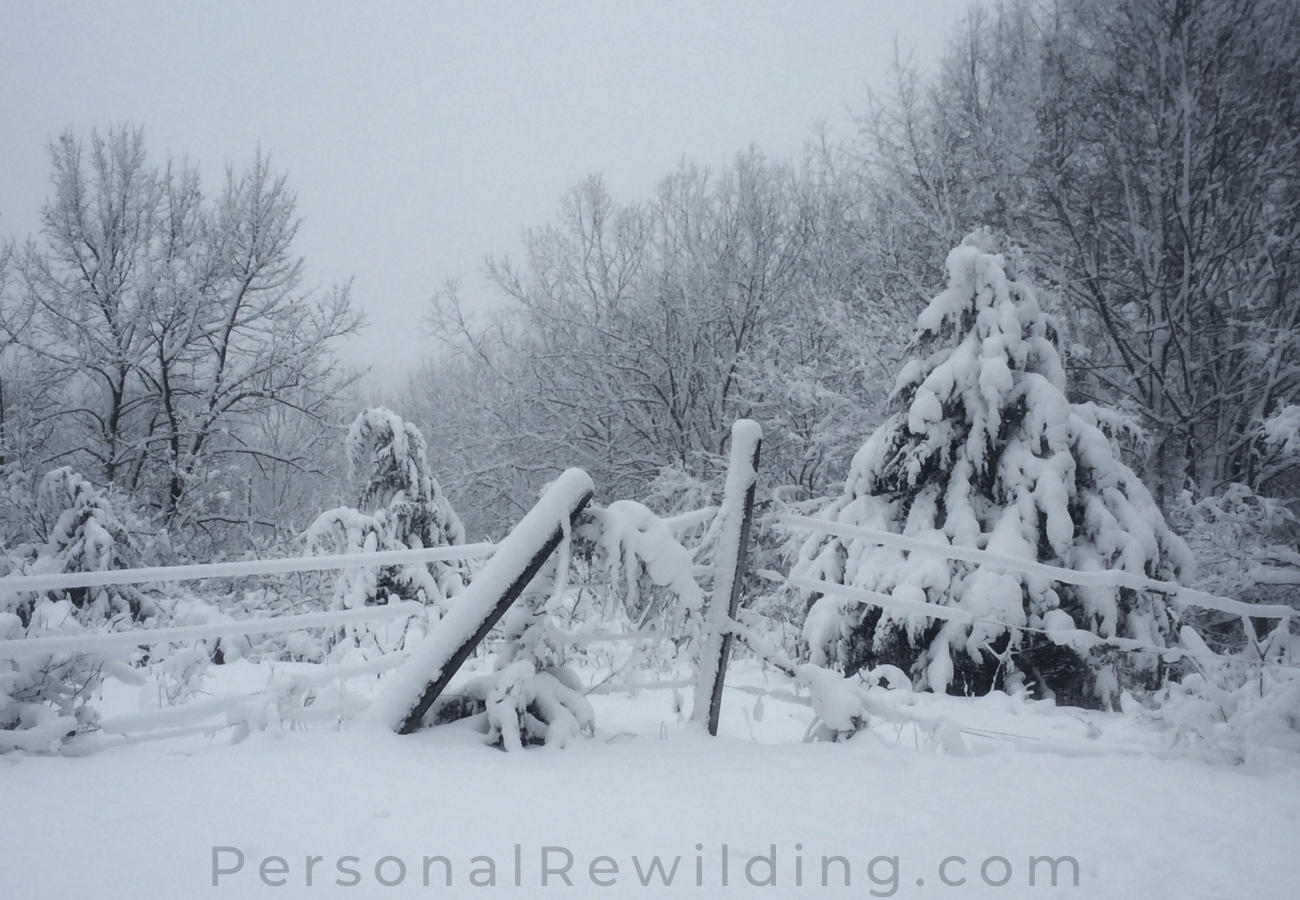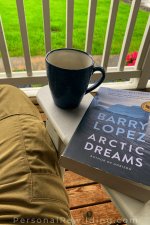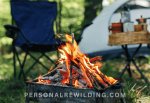- Home
- Walking in Nature
- Walking in Winter
Walking in Winter
Outdoor walking in winter is the one of the best ways I know to chase away the seasonal blues, keep your body active, and maintain a vital link with nature and the outdoors through the dark months.
For most of us, winter is a time of reduced outdoor activity. The weather is cold and gray, the ground is icy, and the daylight hours are few. It’s easy to take this as a sign that we should stay in our warm, well-lighted homes.
Those who let themselves be seduced by the easy and the comfortable miss out on the great rewards of the season.
For those attuned to nature’s beauty, walking in winter is an activity that richly rewards the time and effort spent. Walking in winter is not a thoughtless activity – it requires a bit more planning and preparation than walking in the dry, balmy conditions of the other seasons. I’ll provide some tips below.
Why Go Walking in Winter?
I can already hear your thoughts. Why would I want to go out in that? It’s freezing, icy, gray, and everything’s dead!
I felt this way for years, and treated winter as a huge blank spot in the year, a hurdle to be overcome. I inevitably grew bored with repetitive indoor activities, which led to laziness and more mindless activities. By February or March I found myself tired and depressed from lack of fresh air and sunlight. I dreaded the coming of winter.
It took a change of perspective to change my outlook on the season. Winter’s outdoor beauty is not the green, flowering, lush beauty that we’ve come to associate with nature. It is a brittle, stark, and austere beauty that rewards attention to detail and an ability to appreciate textures and colors you will find in no other season.
With the right preparations, walking in winter is medicine for our indoor claustrophobia. The sharp, invigorating air can clear the cobwebs from our thoughts. With patience and attention, we begin to notice the many bright and breathtaking details that we miss from our frosted windowpanes.
Here are just a few examples of what can be found outdoors in the winter months:
- The textures of brown winter grasses
- Intricate ice designs on puddles and streams
- Sculpted, windblown snow in countless shapes
- The stark beauty of bare branches against the sky
- Ice-coated bushes and tree limbs making eerie sounds in the wind
- Spots of vibrant color – birds, berries, moss – bright against the snow
- Vivid sunsets and sunrises, molten against the ascetic landscape
- Open vistas and far horizons unblocked by foliage
- Moody fogs
- Animal footprints in the snow
Best Times for Winter Walks
Early morning and sunset walks are always rewarding, especially in the winter when sunlight is at a premium, and the colors of the sky are so vivid against a less colorful landscape. Witnessing a winter sunset against a snowy woodland or reflected from a frozen pond are moments not to be forgotten.
Other great times for walking in the winter include:
During or directly after a snowfall. The landscape is moving and mystical in the snow, especially while flakes are still drifting down through the leafless trees and coating all the horizontal surfaces in powdered sugar. The world looks fresh, new, wiped clean after a storm, like a fresh sheet of paper ready for a new story.
After a heavy frost. The trees and plants catch a white hoarfrost, which coats and lights up the landscape, capturing the sunlight and giving the world a ghostly and delicate hue.
After an ice storm. The branches and grasses are weighted down and shining like glass structures. Ice storms are treacherous to drive in and create havoc by damaging trees and power lines, but they make the most breathtaking and magical scenery. Connecting with nature is about finding the power and the beauty in the everyday.
After dark. One of the real challenges of walking in winter is the shortened daylight hours. For most of us, an 8+ hour workday and 6-10 hours of daylight don’t coincide for many opportunities for winter walking.
With a little pre-planning, early sunsets don’t have to deter you from a lovely winter walk. Rechargeable headlamps are cheap and widely available and leave you hands-free for enjoying a walk. Walking city streets in slush and darkness might not be advisable, but finding a nearby nature preserve or park that allows walking after dark is realistic for most people.
Walking in the dark has its own rewards – starry night skies, fading sunset colors, the shine and sparkle of snow or ice in moonlight, the activity of some nocturnal animals, and just the feeling of novelty when walking in the dark.
Preparation for Winter Walks
Taking joy in walking and experiencing the outdoors in winter means going prepared. Walking in winter carries its own set of hurdles and challenges that can be overcome with a little forethought and planning.
Also, every person has a different makeup and tolerance to extremes of heat or cold. Some people are very sensitive to cold and need to bundle up for even cool temps, while others tolerate it easily and rarely struggle with cold fingers or toes even in sub-zero temps.
You should know and listen to your body. Outdoor walking in winter isn’t about “toughness” or resilience, but about being comfortable and present in the moment. It’s about mindfulness and enjoyment, not masochism.
Go the extra mile to make sure you can be comfortable in the outdoors. This means investing in warm clothing, including multiple layers. Layering up is the best way to stay comfortable outdoors in the winter months, as layers can be removed once activity has heated the body or added again as temperature or activity drops.
Layering normally consists of a base layer, an insulating middle layer, and a waterproof outer layer.
Base Layer
Select a warm and comfortable base layer. When you hear the term base layer think ‘long underwear’. The most common base layers are made of Merino wool or a synthetic fabric such as polyester. Base layers are meant to be worn against the skin, so a fabric made to wick moisture away from the skin surface is critical.
You should have both a top and bottom base layer, worn beneath the outer clothes.
Size is also important, as a correctly sized base layer fits snug against the skin to wick away moisture and conserve body heat.
Base layers are commonly sold as either lightweight, midweight, or heavyweight. You should choose a base layer based on the conditions you’ll be walking in. Lightweights are meant for cool but not bitterly cold conditions; midweights are for temps down to ~25-degrees F; and heavyweights are intended for temps below freezing.
Middle Layer
The middle layer is intended as an insulating layer, but there are a broad range of options that provide greater or lesser levels of insulation.
These can be fleeces, wool blends, down jackets, synthetic tops, or one of many other types of clothing. One general rule is the denser or more insulative the material, the warmer that layer will keep you, so choose a middle layer based on the outdoor conditions such as rain/snow, wind, and temperature.
For pants, avoid cotton clothing such as sweatpants or jeans, since these will pick up moisture and lose insulating properties while wet. Consider instead synthetic or wool blend pants or leggings that repel water or wick moisture away from the body.
Outer Layer
Finally, the outer layer is intended as a windproof or waterproof layer (or “shell”), meaning that it will block wind, rain, and snow and keep your inner layers dry. Quality outer layers are frequently either water resistant or waterproof, but will allow moisture from inside to wick outward, keeping you from marinating in your own sweat.
Gloves, Hats, Scarves, and other Outerwear
Aside from the body layers, walking in winter means giving thought to keeping your extremities warm. Maintaining good insulation on the core of your body means that your extremities will stay warmer and receive good circulation, but that isn’t enough in cold temperatures.
Gloves are a must in cold weathers. If you’re anything like me, your fingertips grow cold at the first sign of frost, and I’ve experimented with a variety of gloves on a quest to keep my fingers from freezing.
There are two great ways to keep your hands comfortable outdoors even in sub-freezing temperatures: hand warmers and mittens.
I’ve attempted one style of glove after another, from down ski-gloves to Thinsulate to other high-tech options. They had varying levels of effectiveness, but none ever kept my hands comfortable in extreme cold.
After that, I moved on to mittens, and a good pair of wool blend or synthetic mittens is head and shoulders above any pair of fingered gloves I’ve ever owned. Keeping your fingers together you lose some dexterity, but you gain in warmth. And mittens make it easier to use hand warmers – either the instant variety or rechargeable battery powered.
If you’re the type that doesn’t struggle much with cold hands, a standard pair of gloves might be acceptable to keep you warm, but be sure to find something waterproof. A wet pair of gloves is worse than useless and can lead to dangerous conditions such as frostbite or hypothermia.
Of equal importance: hats and scarves. Our heads – particularly our ears and nose – are very susceptible to wind and cold. Wearing a hat – wool blend or synthetic – helps control heat loss through the head and protects against frostbitten ears or earaches. Hats with built in face coverings or that offer partial face protection can also help control heat loss through the exposed face.
Scarves help to control heat loss around the neck and lower head. An outer layer with a hood or a high neck can perform a similar function.
Insulated and waterproof shoes are also a must for walking in winter. Keep your feet dry and toasty with a quality pair of winter hiking boots. Finding a great pair of winter hikers is one of the best investments you’ll make.
Depending on the winter conditions around you, of equal importance are traction devices such as ice cleats or YakTrax, which are generally inexpensive and attach to the bottom of your boots to provide additional traction on steep, icy, snow-covered, or wet terrain.
Some other gear that can be extremely helpful when walking in winter:
- Trekking Poles
- Head Lamps (covered above for walking after dark)
- Camera
- Battery-powered or chemical hand-warmers
- Heated Garments (such as battery-heated underwear or gloves)
